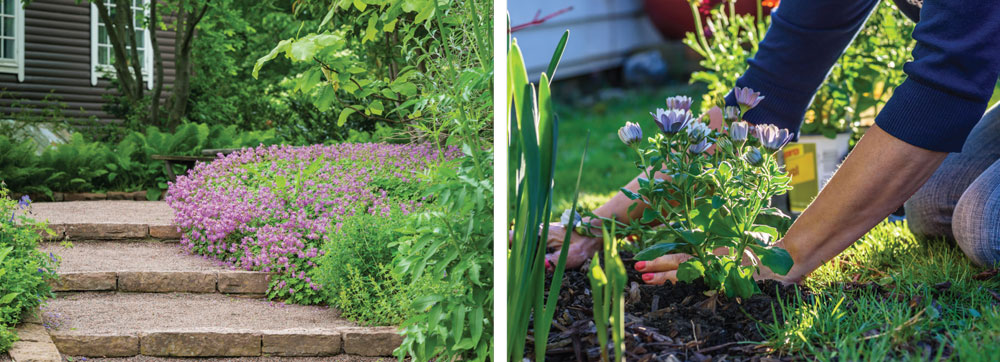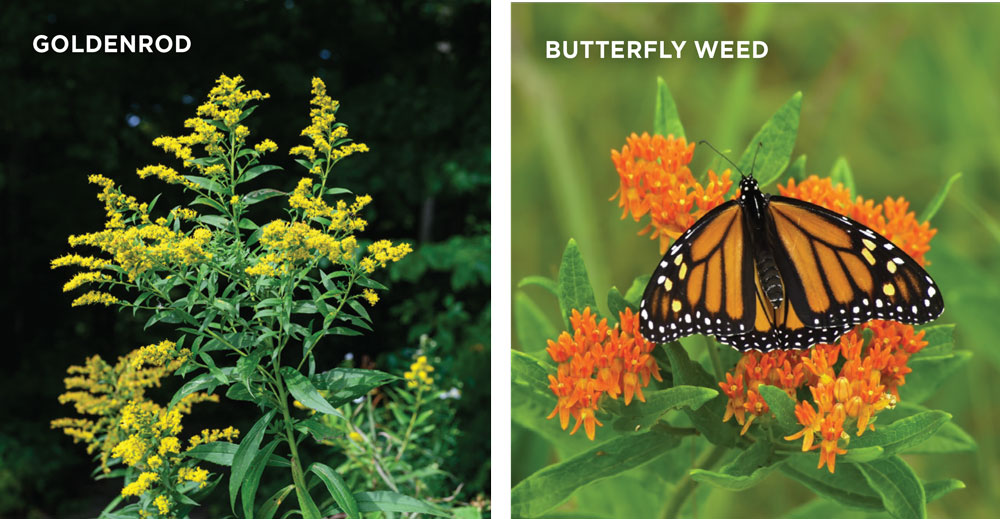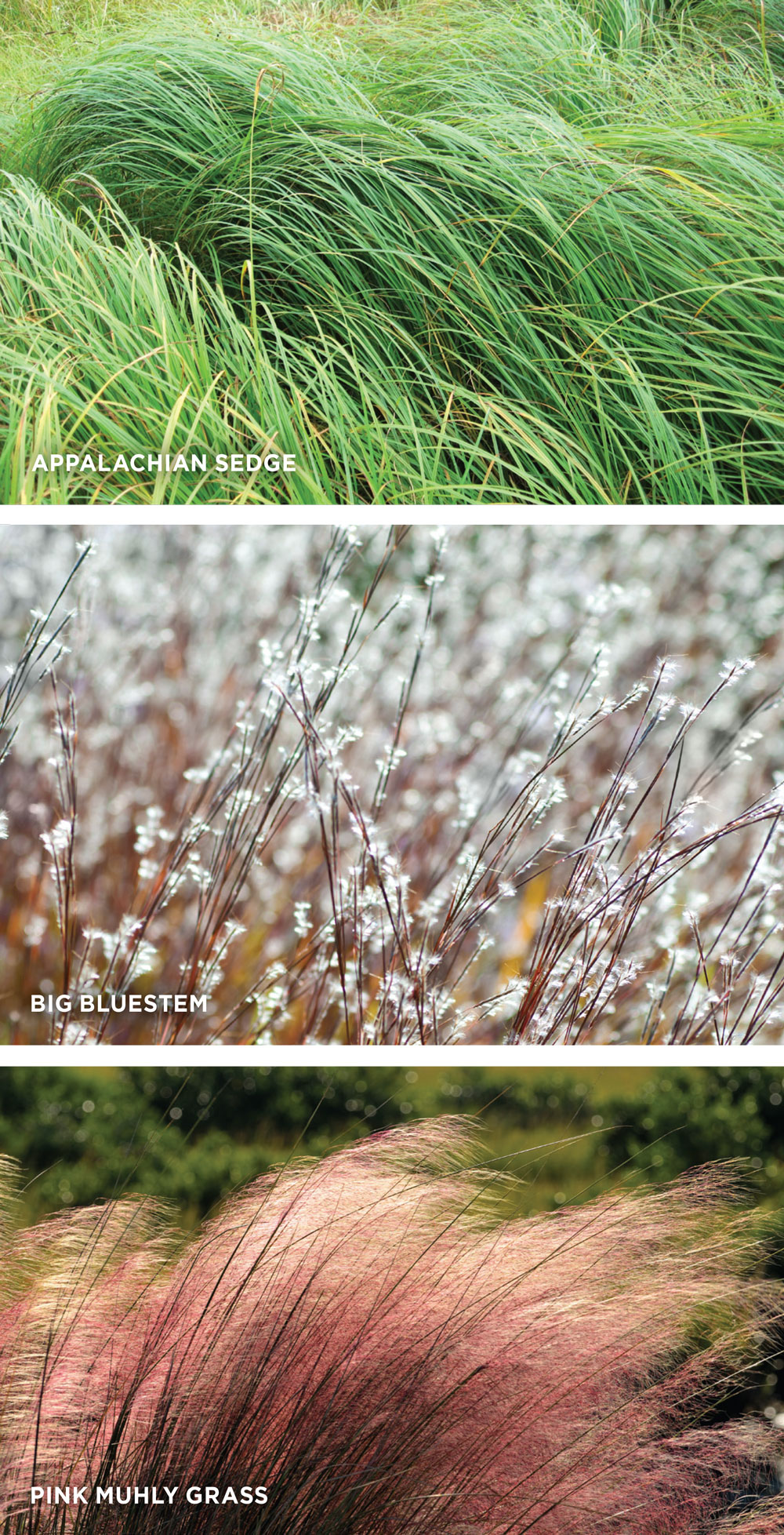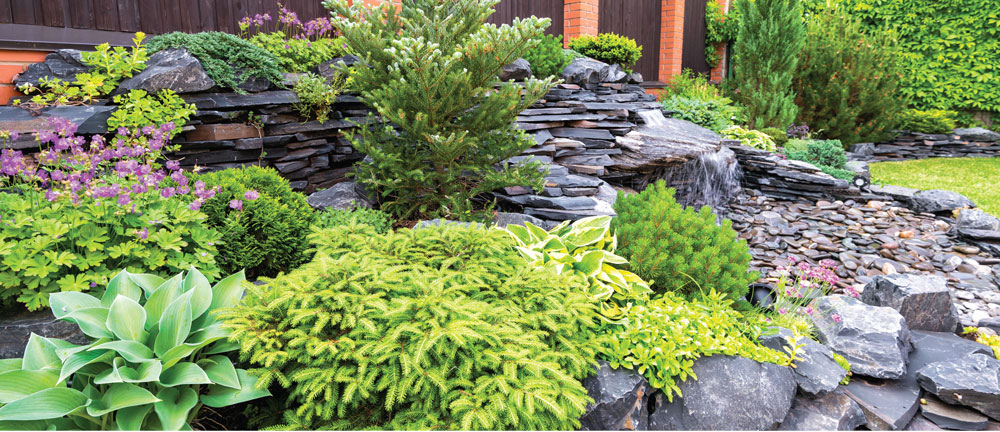EMBRACING THE WILD
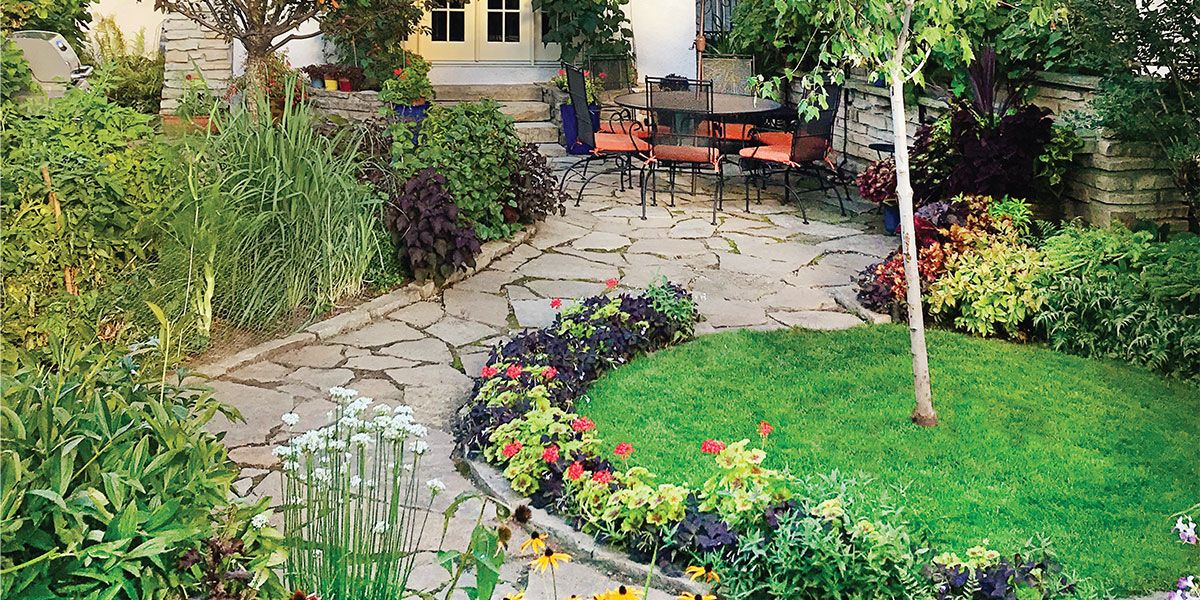
Chaos gardening is creeping into the mainstream
Since the 1950s and 1960s, neatly manicured lawns have symbolized the ideal American yard. However, more and more homeowners are turning away from traditional landscaping in favor of more sustainable and low-maintenance landscaping options. One such solution is “chaos gardening” — a trend that embraces the beauty of nature through diverse plant life, native grasses and wildflower meadows. This approach offers a visually dynamic and natural look that changes with the seasons, while reducing the effort and expense of lawn care. It also supports local ecosystems by supporting pollinators and native wildlife.
A verdant grassy lawn requires frequent mowing, fertilization and irrigation — practices that are costly and consume valuable resources such as fresh water. Traditional grass lawns also contribute to water waste, create pesticide runoff and use toxic chemicals that can be harmful to humans and pets.
Alternatively, gardeners who plant native grasses, wildflowers and groundcovers create landscapes that mimic nature and require minimal maintenance. By favoring native plants and restoring their yards to a more natural state, chaos gardeners create dynamic and resilient landscapes where birds, bees, butterflies and other pollinators thrive.
5 steps to a chaos garden
Transitioning from a traditional lawn to a chaos garden requires some planning and patience, but will pay off by creating a garden that is less expensive and time consuming to maintain. Here is how you can get started.
1. CHOOSE NATIVE PLANTS
Native plants are adapted to local soil and climate conditions, which makes them easier to maintain than non-native species. When selecting plants for your chaos garden, opt for wildflowers, perennial herbs and ornamental grasses that naturally grow in your region. Here are a few popular wildflower and perennials for USDA Zone 7b:
- Black-eyed Susan (Rudbeckia hirta)
- Butterfly Weed (Asclepias tuberosa)
- American Yarrow (Achillea borealis)
- Bee Balm (Monarda didyma)
- Goldenrod (Solidago speciosa)
2. INCORPORATE ORNAMENTAL & NATIVE GRASSES
To provide ground coverage without the hassle of mowing, incorporate groundcovers. You can choose one to cover a large area or plant a selection in drifts for visual interest. The following plants spread quickly and require minimal upkeep:
- Big Bluestem (Andropogon gerardii)
- Appalachian Sedge (Carex appalachica)
- Pennsylvania Sedge (Carex pensylvanica)
- Pink Muhly Grass (Muhlenbergia capillaris)
- Purple Lovegrass (Eragrostis spectabilis)
3. LEVERAGE HARDSCAPING ELEMENTS
A full lawn replacement doesn’t mean your yard has to look overgrown or untidy. Integrate pathways, hardscaping and mulched areas to define spaces and provide functionality. Patios and decks can extend your living space outdoors and offer comfortable spots for entertaining and relaxing. Boulders and rock gardens can replace grassy areas while adding visual interest and texture. Create pathways with stepping stones, gravel paths or bricks to guide visitors through the natural garden while reducing foot traffic on plants. Add borders and mulched areas to delineate between areas in the garden. Using mulch around plants will reduce weeds and retain moisture, improving soil health and reducing or eliminating the need for watering.
4. ENCOURAGE WILDLIFE & POLLINATORS
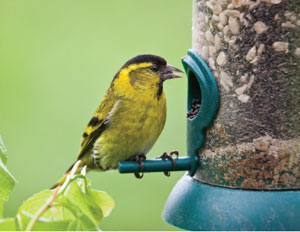 Chaos gardening attracts beneficial insects, birds and small animals to your garden. In addition to selecting native plants, you can make your yard a haven for biodiversity by installing bird feeders, birdbaths and bee hotels.
Chaos gardening attracts beneficial insects, birds and small animals to your garden. In addition to selecting native plants, you can make your yard a haven for biodiversity by installing bird feeders, birdbaths and bee hotels.
Leaving some areas of your garden wild with leaf litter, dead wood or undisturbed soil can also provide shelter for beneficial insects and small creatures. Planting a variety of flowering species that bloom throughout the seasons ensures a continuous food source for pollinators such as bees, butterflies and hummingbirds. Avoiding pesticides and herbicides will help maintain a healthy environment for insects, while adding features like rock piles or shallow water sources can further attract pollinators and support a balanced ecosystem in your yard.
5. EMBRACE THE BEAUTY OF IMPERFECTION
Chaos gardens are meant to look natural, and, in contrast to manicured lawns, they offer a visual cornucopia of different plants, textures and colors. The beauty of this method is that each garden is unique and evolves over time, offering a constantly changing landscape abuzz with native plants and pollinators.
If you’re hesitant about completely removing your lawn, consider starting small. Convert a section of your yard into a wildflower meadow or replace a portion of grass with a creeping groundcover. Over time, you can expand these areas as you grow more comfortable with the natural look. ✦
RESOURCES FOR CHAOS GARDENING
If you’re looking for additional guidance, check out these resources for information on eco-gardening and native Virginia plants:
- Virginia Native Plant Society (VNPS): For guides on native plants and conservation efforts, visit vnps.org.
- Plant Virginia Natives: For resources on sustainable landscaping and native plant gardening, visit plantvirginianatives.org.
- Digital Plant Atlas of Virginia Flora: For a comprehensive resource for the geographic distribution of vascular plants, visit vaplantatlas.org.
- Virginia Cooperative Extension: For educational resources on native plants, pollinator gardens, and lawn alternatives, visit ext.vt.edu.
- Blue Ridge PRISM: For information on invasive plant removal and native plant restoration, visit blueridgeprism.org.
chaos gardening, diverse plant life, landscaping options, minimal maintenance, native grasses, traditional landscaping, wildflower meadows
